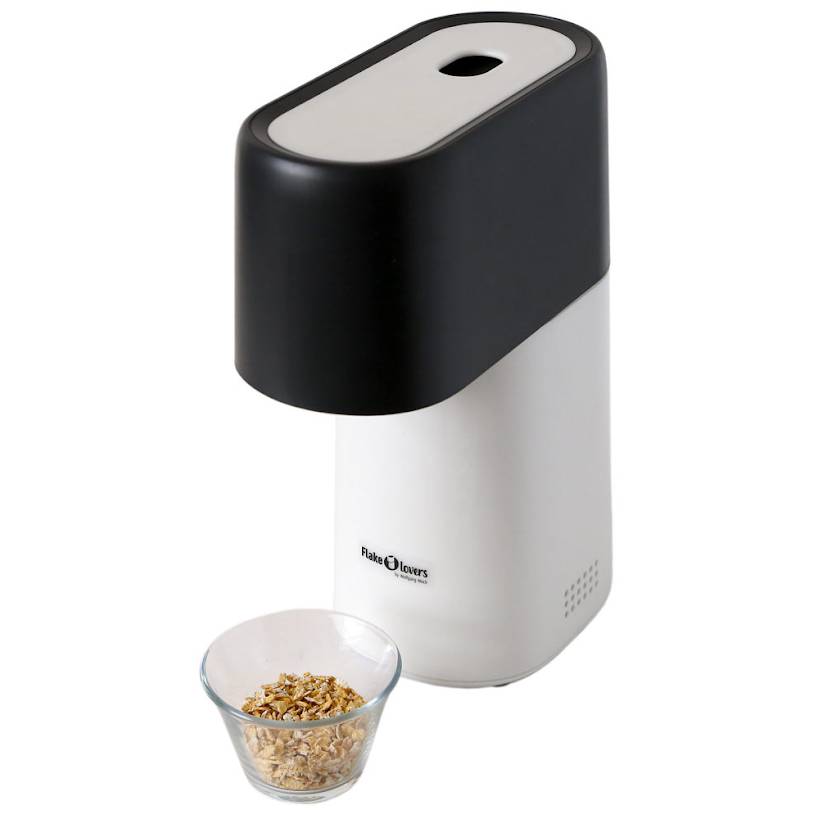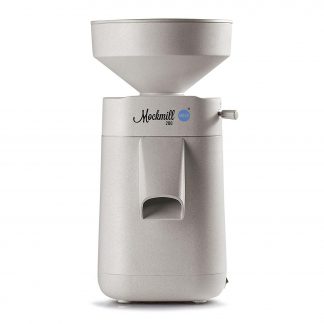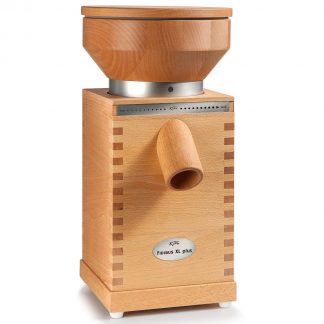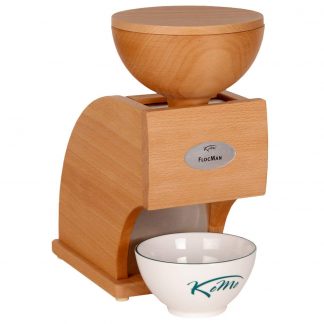Description
Wolfgang Mock’s latest creation sets a new standard in design, price and performance for freshly rolled oats and more.
Fresh is key. Enjoy a taste of oat flakes heaven with Wolfgang’s muesli or search “Bircher Muesli” on Youtube for awesome snack recipes. Good ‘ol granola and hot oatmeal cereal can’t be beat with freshly flaked oats. Try oatmeal raisin cookies and oatmeal muffins made from your own rolled oats.
Flakers are commonly used for turning oat groats into oat flakes, but most varieties of wheat can also be flaked. See below for what can and can’t be flaked or ground. Very useful info: Oat groats are naturally soft and flake nicely as they come. Other grains may be prone to crumbling without a little help. Do this before flaking – put the quantity of oats or grain you want to flake into a zip-lock bag with a little water in the ratio of 1 teaspoon per cup of grain, seal the bag and shake it up to disperse the water. Then let it sit for a few hours to overnight. The added moisture softens the grain just enough to produce a nicer flake. Even your oats will turn out better. Resist the temptation to add more water than suggested. Too moist and the grain might clog the metal flaking wheels.
Nutritional benefits of oats – Oats are loaded with important vitamins, minerals and antioxidants. They’re also high in fiber and protein compared to other grains. Half a cup of dry oats contains:
- Manganese: 191% of the RDI
- Phosphorus: 41% of the RDI
- Magnesium: 34% of the RDI
- Copper: 24% of the RDI
- Iron: 20% of the RDI
- Zinc: 20% of the RDI
- Folate: 11% of the RDI
- Vitamin B1 (thiamin): 39% of the RDI
- Vitamin B5 (pantothenic acid): 10% of the RDI
- Smaller amounts of calcium, potassium, vitamin B6 (pyridoxine) and vitamin B3 (niacin)
100 grams of fresh flakes per minute
Flake Lovers flaker can produce roughly 100 grams of fresh flakes per minute at the touch of a button. For context, it takes about 2 minutes to flake a half cup of oat groats which is enough for about 2 servings of hot oatmeal cereal.
Reasonably quiet
The flaking happens relatively quietly. The two stainless steel rollers crush grain and seeds with ease. You can have a conversation next to it. In operation, the volume is around 60 dB.
What ingredients can be crushed?
Almost all types of grain: oats, spelt, rye, einkorn, emmer. All wheat varieties.
Rice and millet can be crushed, but are more likely to be powdered (as they are very dry)
So-called pseudo-cereals such as buckwheat and quinoa
Most oilseeds such as flaxseeds, sunflower seeds, sesame, hemp seeds, etc.
Incidentally, it is very important to crush flaxseed before consumption, as only then can the body process the valuable nutrients (e.g. omega-3 fatty acids). The flaxseed husk is simply too hard for the digestive system to break it down on its own.
And which ones CANNOT be crushed?
Corn (too big), pumpkin seeds (too big), nuts like almonds, peanuts, cashews (too oily), coffee, legumes (too big).
Housing made from 100% renewable raw materials
The flaker housing is made from the same renewable Arboblend® material used for the Mockmill 100 and 200 grain mill housings. Arboblend® is a high impact thermoplastic made of lignins from plant fiber that can be cast into a mold just as easily as plastic. Lignin is a waste product in the paper industry. This means that large quantities can be produced inexpensively and sustainably. It also has a significantly higher quality than plastic in terms of its visual and haptic appeal.





Reviews
There are no reviews yet.